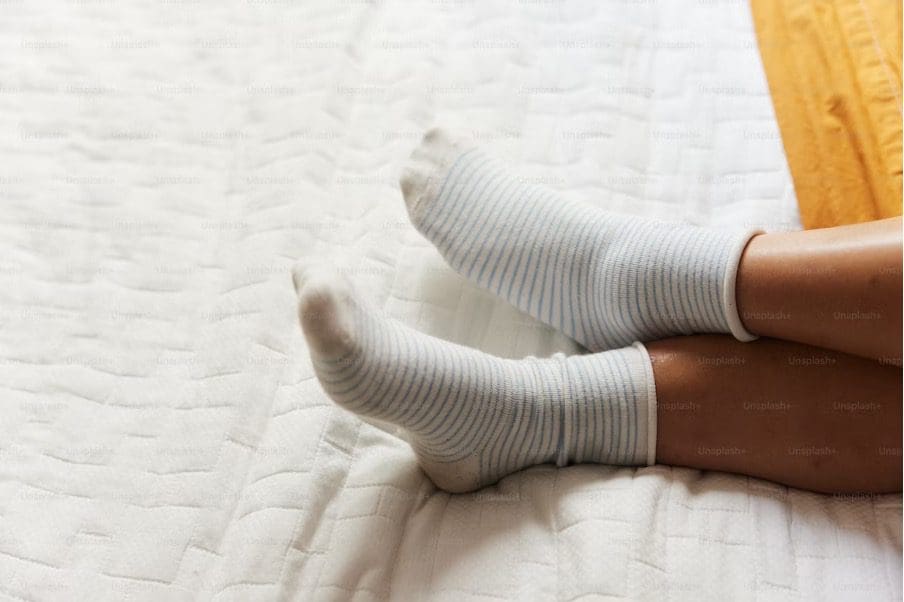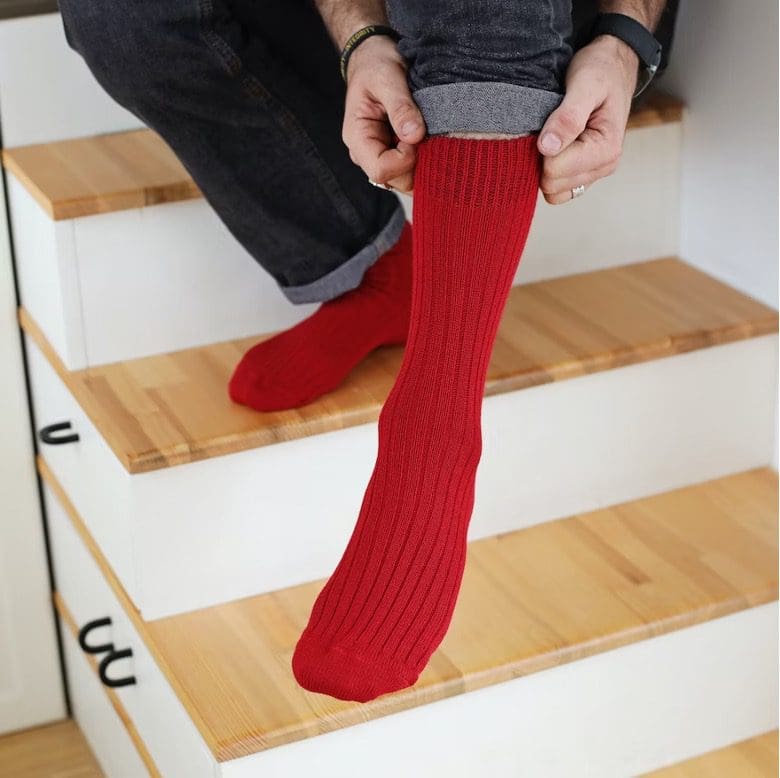When it comes to managing diabetes, paying attention to every aspect of your health is crucial. One often overlooked yet essential component is choosing the right diabetic socks. These specialized socks are designed to provide comfort, support, and protection for individuals with diabetes. In this article, we will discuss key features to consider when selecting diabetic socks, ensuring you make an informed decision that promotes foot health.
Seamless Construction
One of the most important features to look for in diabetic socks is seamless construction. Seamless socks are specifically designed to minimize the risk of friction and irritation, which can lead to blisters, sores, and ulcers. The absence of seams eliminates pressure points that could potentially cause discomfort or damage to sensitive diabetic feet. With a smooth, seamless design, these socks provide a layer of protection that reduces the chances of developing foot complications.
On the other hand, non-binding, non-elastic socks are specifically designed to provide a gentle and comfortable fit without the use of tight elastic bands. These specialized socks are designed with a gentle, loose-fitting top that does not constrict or leave marks on the legs. Unlike traditional socks with elastic bands, non-elastic top socks provide a comfortable and secure fit without compromising circulation. They eliminate the risk of excessive pressure on the lower limbs, promoting healthy blood flow and reducing the likelihood of complications.
Moisture-Wicking Fabrics
Diabetic socks should be made from moisture-wicking fabrics that draw moisture away from the skin. Fabrics like merino wool, bamboo, or synthetic blends with moisture-wicking properties help keep your feet dry and prevent the buildup of sweat. By maintaining a dry environment, moisture-wicking socks reduce the risk of fungal infections, such as athlete’s foot, and promote overall foot hygiene. These fabrics allow moisture to evaporate quickly, ensuring your feet stay comfortable and dry throughout the day.
Breathability
Breathability is another essential feature to consider when choosing diabetic socks. Look for socks made from breathable materials that allow air circulation around the feet. Proper airflow helps regulate foot temperature and prevents excessive sweating. By reducing moisture and promoting ventilation, breathable socks decrease the chances of bacterial and fungal growth, promoting healthy feet and reducing the risk of infections. Additionally, breathable socks contribute to overall comfort, keeping your feet cool and fresh.
Cushioning and Padding
Choosing diabetic socks with adequate cushioning and padding is crucial for providing support and reducing pressure on the feet. Look for socks that have extra padding in the sole and heel areas. This additional cushioning helps absorb shock and minimizes the risk of foot injuries, especially in individuals with reduced sensation or peripheral neuropathy. Cushioned socks also provide added comfort, making them ideal for individuals with sensitive feet. The padding acts as a protective barrier, reducing the impact of each step and enhancing overall foot comfort.
Arch Support
Another important feature to consider is arch support. Diabetic socks with proper arch support help distribute the body’s weight evenly across the foot, reducing strain on the arches and preventing excessive pressure points. Good arch support can alleviate discomfort, provide stability, and promote proper foot alignment. For individuals with diabetes, who may be prone to foot complications, arch support is crucial for maintaining optimal foot health. The right level of support can help prevent arch collapse, promote balance, and reduce the risk of foot deformities.
Graduated Compression
Diabetic socks with graduated compression are designed to improve blood circulation in the legs and feet. This type of compression involves applying stronger pressure at the ankle and gradually decreasing it towards the calf. Graduated compression socks help promote blood flow, reduce swelling, and prevent conditions like deep vein thrombosis (DVT). By exerting pressure on the lower limbs, these socks encourage blood to flow more efficiently back toward the heart. This feature is particularly beneficial for individuals with diabetes, as it helps address circulation issues and reduces the risk of leg and foot complications.
Antibacterial and Antimicrobial Properties
Opting for diabetic socks with antibacterial and antimicrobial properties can provide an extra layer of protection for your feet. These socks are treated with special agents that help prevent the growth of bacteria and fungi, reducing the risk of infections. By inhibiting the proliferation of harmful microorganisms, antibacterial and antimicrobial socks help maintain foot hygiene and minimize foot odor. These properties are especially beneficial for individuals with diabetes, whose compromised immune systems may make them more susceptible to infections.
Easy Care and Durability
When choosing diabetic socks, it’s important to consider their ease of care and durability. Look for socks that are machine washable and retain their quality even after multiple washes. High-quality diabetic socks are designed to withstand the rigors of regular use and maintain their shape, cushioning, and support over time. Durable socks not only provide long-lasting comfort and protection but also offer value for your investment. Additionally, consider the socks’ ability to resist wear and tear, as reinforced areas in the heel and toe can enhance their durability.
Size and Fit
Lastly, it is crucial to ensure that the diabetic socks you choose are the right size and fit for your feet. Socks that are too loose or too tight can cause discomfort and hinder their effectiveness. To find the appropriate size, measure your feet accurately and refer to the sizing charts provided by manufacturers. Proper fit ensures that the socks provide the desired level of comfort, support, and protection. The socks should conform to the contours of your feet without constricting them. A well-fitting pair of diabetic socks should stay in place without sagging or slipping, providing a snug yet comfortable fit.


Taking care of your feet is vital when managing diabetes, and choosing the right diabetic socks plays a crucial role in maintaining foot health. By considering features such as seamless construction, moisture-wicking fabrics, breathability, non-binding tops, cushioning and padding, arch support, graduated compression, and size and fit, you can find socks that provide the comfort and support your feet need. Prioritize your foot health, and make an informed choice to ensure optimal comfort and protection for your feet as you manage your diabetes.
Remember, these socks are more than just regular socks—they are an investment in your overall well-being.









Leave a Reply
View Comments